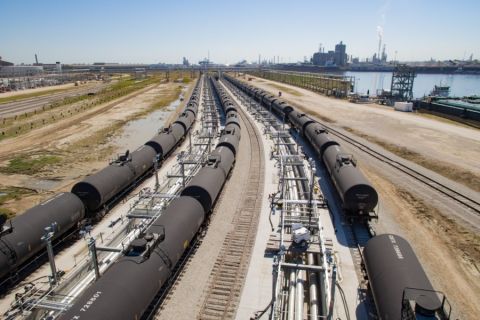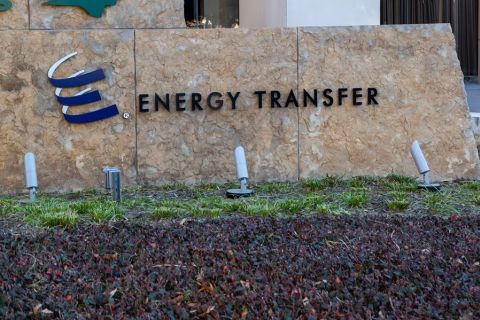The discovery of Elmworth Field in Alberta in the mid-1970s opened many eyes in the oil industry. The find, made by maverick wildcatter Canadian Hunter Exploration Ltd., was an immense basin-center gas accumulation in the foredeep of the Western Canadian Sedimentary Basin. Here was a whopping stratigraphic trap-featuring multiple pay intervals-that lay downdip from water, an accumulation baffling to geologists weaned on traditional prospecting theories. Since then, of course, basin-center accumulations have been recognized and exploited around the world. Indeed, the Western Canadian Basin shares similar characteristics with a number of the interior basins in the U.S. Rocky Mountain region: gas-saturated, Cretaceous-age reservoirs sit in basin centers, rimmed by updip water contacts. Basin-center accumulations occur in Wyoming's Green River Basin, Colorado's Piceance Basin, and New Mexico's San Juan Basin. The rocks in the U.S. basins are generally tight, exhibiting porosities of less than 13% and permeabilities below one millidarcy, and are classed as unconventional resources. In contrast, Canada's 5,000-square-mile Deep Basin sports sweet spots of high-permeability reservoirs that are ensconced within a tighter matrix. The high-perm zones are mainly conglomerates that were deposited as shoreface or beach deposits. Porosities are typically less than 10%, but large, well-connected pore throats ensure excellent perms. Early exploration and production efforts in the Deep Basin, which extends from western Alberta into eastern British Columbia, were focused on finding and developing these premium reservoirs. Wells that flowed 20- to 30 million cubic feet of gas per day were not uncommon, nor were pools containing recoverable gas reserves in excess of 100 billion cubic feet (Bcf). During the basin's heyday in the mid-1970s and 1980s, an extensive infrastructure was built to support a multitude of high-performance wells. Western Canada's Deep Basin has now produced more than 5 trillion cubic feet of gas, and the era of the sizzling finds is largely over. But today, three decades after its discovery, the Deep Basin is the site of another burgeoning play, this one targeting its tighter gas reservoirs. Engineering a strategy In December 2001, Houston-based Burlington Resources acquired Canadian Hunter, the firm that had held a dominant position in the Deep Basin since its earliest days. Canadian Hunter's approach was to generate prospects through intense and detailed geologic research, aimed at finding high-rate, high-volume reservoirs. As these opportunities shrank over the years, it turned its attention to areas beyond the Deep Basin. In 2001, the company drilled 97 wells on its net Deep Basin leasehold of 1.1 million acres, and its production from the area stood at 264 million cubic feet of gas per day. Burlington took a fresh approach to its new asset. The independent had considerable experience in unconventional resources and in conducting large-scale, multiyear drilling programs, and it saw an incredible opportunity to mix in more unconventional locations with the Canadian Hunter-style prospects. Certainly, the tight-gas potential of the Deep Basin was well known to many operators, but the play was believed to be uneconomic. Burlington thought otherwise. The key to unlocking the tight-gas potential lay in mounting a large-scale drilling program and managing the cost structure, says Mark Ellis, president, Burlington Resources Canada Ltd. The company embarked on a massive effort to exploit the tighter reservoirs of the Deep Basin. The basin offers some 10,000 feet of Cretaceous sediments, and essentially every porous interval is charged with gas. Incidentally, these wells must rely on matrix porosity, as this part of western Canada lacks the natural fracturing so common in U.S. interior basins. Fortuitously, 17 different zones produce in the Deep Basin, and these often oblige the geoscientists by stacking one over another. Burlington appreciated that it had a tremendous resource just waiting for its particular brand of expertise. It tallied more than 1,200 potential well locations on its spread of Deep Basin acreage. Its first year in the Deep Basin, the company drilled 127 wells. This year, it will spend $174 million to drill 200 wells, and it plans to maintain an annual drilling program of 200 wells or more for the next several years. Already, Burlington's production from the Deep Basin has jumped to a record 330 million cubic feet per day, a 25% increase since Burlington bought Canadian Hunter. "As we continue to ramp up, we reduce our aggregate costs and create potentially even more inventory within the field," says Ellis. "The Deep Basin is a great play right now," says John Rossall, vice president of development. "It has huge resources of tighter reservoirs that are absolutely economic with current gas prices, and that provide us with years of opportunity. We are far from finished out here." About 75% of Burlington's 2003 locations are drilled to targets near the base of the Cretaceous, such as the Cadomin, a widespread sandstone reservoir. Cadomin wells are typically drilled to 8,400 feet for a completed well cost of $950,000 (including tie-in to sales). Average initial rates are 1.1 million cubic feet per day, and recoverable reserves are 1.2 Bcf. The wells are drilled in and amongst the existing infrastructure, and are rarely more than two miles from an existing pipeline. In the past, the basin was developed on primary spacing only, but Burlington has been pushing downspacing. In the core Elmworth area, it is currently drilling Cadomin wells on 320-acre spacing; eventually, that will likely be reduced to three to four wells per section. The remaining fourth of Burlington's wells aim at shallow, Upper Cretaceous zones such as the Chinook. These wells are around 5,000 feet deep, cost $530,000 and recover on average some 600 million cubic feet of gas. Much of this year's program is centered in the Wapiti area, south of Elmworth. "We are taking a balanced approach to the Deep Basin, adding our engineering-oriented approach to the traditional geological prospecting," says Ellis. Cost control Clearly, well costs loom as a formidable challenge in any play that seeks to exploit lower-quality resources. Burlington has brought its considerable operational experience in coalbed-methane, fractured-shale and tight-sand plays to bear on the Deep Basin. "Inventory creation is crucial to leveraging large-scale programs and capturing cost efficiencies," says Ellis. "We try to get well out in front of the drilling program to plan our business properly. This is not just-in-time drilling." Already, Burlington has dropped average Deep Basin drilling costs by a stout amount. Per-well costs were down 22% to $649,000 in first-quarter 2003 from $830,000 in first-quarter 2001. "We have a two-pronged approach: one is how we work the operations side, and the other is our price control," says Don Hrap, vice president of production. The company focuses on mud-system designs and bit technologies, and tries to constantly improve penetration rates. The formations are underpressured, so Burlington strives to keep mud weights low. Since the Canadian Hunter purchase, it has reduced average drilling time from 21 to 16 days on Deep Basin wells. Its large prospect inventory also allows it to level-load its rig schedule for more efficient use of the equipment. The company also directs a strong effort at procurement, leveraging its large-scale program approach when negotiating service and supply agreements. And, it is constantly fine-tuning its stimulation and completion regimens. "We are using established technology, but we pay attention to all the mundane details," says Hrap. "Our challenge is to continue to improve our cost structure, particularly in the face of rising service costs." A great advantage is that Burlington can set the pace of activity it prefers without outside constraints. Unlike a number of unconventional plays in the western U.S., water usage, handling and disposal are not issues in the Deep Basin. The wells produce little water, and the operations are also light consumers of the resource. Land access is seasonal in portions of the basin, which ranges from farmland in the north and east to rolling bush country in the south and west, but there are no unusual restrictions. Overall relations with landowners and regulators are amiable. And, as is typical in Canada, the company controls the midstream portion of its Deep Basin gas business. It owns interests in the gathering systems and two major processing plants, including Wapiti and the Burlington-operated Elmworth plant. Combined capacity at the plants, which extract liquids from the sweet Cretaceous gas, is about 1.1 Bcf per day. Present throughput is 800 million cubic feet per day, leaving plenty of available capacity to accommodate production growth. Looking ahead Today, Burlington is well on its way to proving up the tight-gas potential in the Deep Basin. It has already succeeded in identifying its inventory, controlling its costs and ramping up its activity. The company expects that the Deep Basin will be one of its core gas-producing regions for many years to come. "We have undrilled sections, and many sections that are developed on 640-acre spacing on the Alberta side of the Basin," says Ellis. "And, we have not yet exploited our acreage to any significant degree on the British Columbia side, where we expect to extend our successes as we move west." Although many in Canada's oil patch didn't think it was possible to improve upon Canadian Hunter's long and distinguished tenure in the Deep Basin, Burlington has launched an intriguing sequel.
Recommended Reading
Canadian Railway Companies Brace for Strike
2024-04-25 - A service disruption caused by a strike in May could delay freight deliveries of petrochemicals.
Talos Energy Expands Leadership Team After $1.29B QuarterNorth Deal
2024-04-25 - Talos Energy President and CEO Tim Duncan said the company has expanded its leadership team as the company integrates its QuarterNorth Energy acquisition.
Energy Transfer Ups Quarterly Cash Distribution
2024-04-25 - Energy Transfer will increase its dividend by about 3%.
Guyana’s Stabroek Boosts Production as Chevron Watches, Waits
2024-04-25 - Chevron Corp.’s planned $53 billion acquisition of Hess Corp. could potentially close in 2025, but in the meantime, the California-based energy giant is in a “read only” mode as an Exxon Mobil-led consortium boosts Guyana production.
CNX, Appalachia Peers Defer Completions as NatGas Prices Languish
2024-04-25 - Henry Hub blues: CNX Resources and other Appalachia producers are slashing production and deferring well completions as natural gas spot prices hover near record lows.





